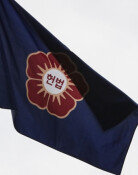'N.K. conducts missile tests arcing at higher angles,' says military
'N.K. conducts missile tests arcing at higher angles,' says military
Posted July. 23, 2016 06:56,
Updated July. 23, 2016 07:15
The South Korean military said Friday that the three ballistic missiles that North Korea fired into eastern sea on Tuesday are believed to be two Rodong missiles (semi intermediate-range missile), and one Scud missile (short-range missile).
The military judges that the North conducted a series of missile tests arcing at higher angles from last year, with the aim of circumventing South Korea’s intercepting missile network and testing the North’s capacity to mount miniaturized nuclear warheads on its missiles. Generally, small nuclear warheads for ballistic missiles measure 90 centimeters in diameter and weigh less than 1 ton each. If warheads are made smaller, they can be sent farther. The North is believed to be developing nuclear warheads measuring 700 kilograms to 1 ton each. The Rodong missile carrying a warhead of this size can fly up to the maximum range (1,300 kilometers).
It means Pyongyang is conducting diverse firing tests through combination of various nuclear warhead sizes and firing angles in order to launch an optimized nuclear attack with the Rodong missiles by breaking through the THAAD system to be deployed in Seongju, North Gyeongsang Province, and the new Patriot missile (PAC-3). “The Rodong loaded with a two-ton nuclear warhead can strike the entire areas of South Korean when fired from near Pyongyang, even if the missile’s range is cut in nearly half,” a South Korean military source said.
“The North seems to be constantly checking the results of progress in miniaturizing its nuclear warheads through test fires of the Rodong missile," another source added.
윤상호군사전문기자 ysh1005@donga.com
Headline News
- Med professors announce intention to leave hospitals starting Thursday
- Bridge honoring Sgt. Moon Jae-sik unveiled in Pennsylvania
- Chief of Staff Chung tells presidential secretaries to stay away from politics
- US FTC bans noncompete agreements
- N. Korea launches cyberattacks on S. Korea's defense companies







